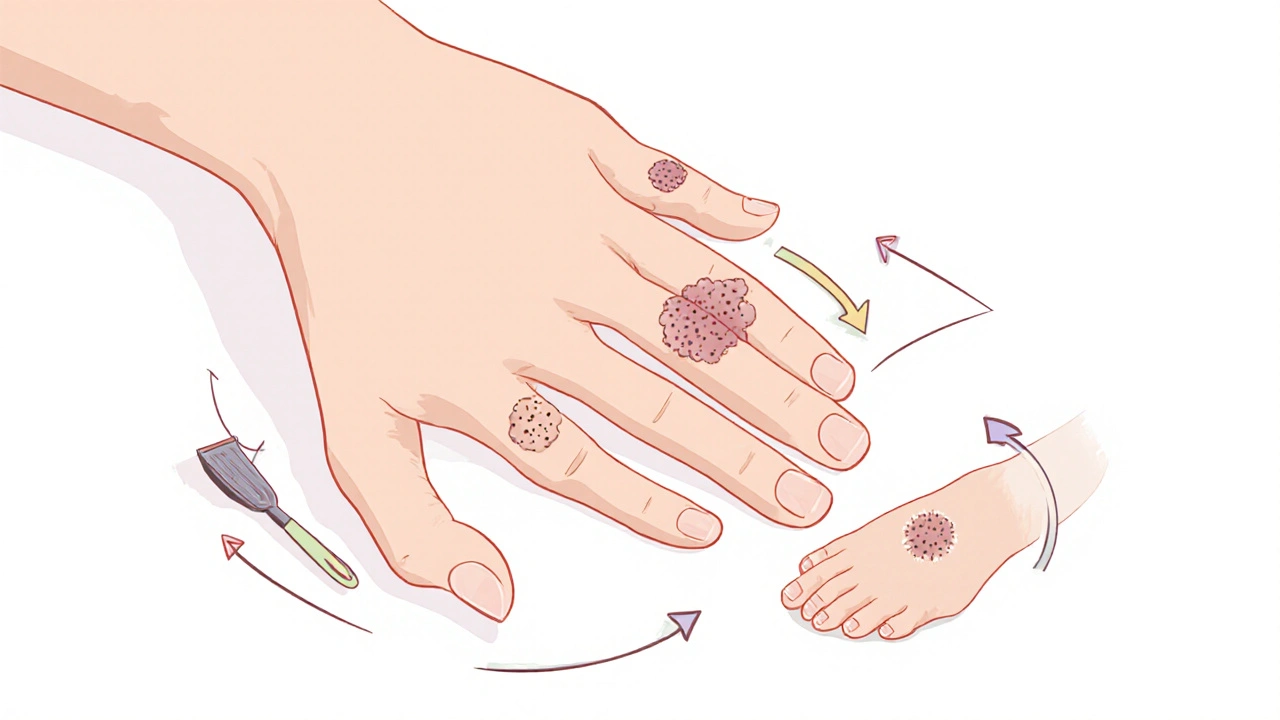Wart Removal: Effective Methods and What Actually Works
When you spot a wart, a small, rough skin growth caused by the human papillomavirus (HPV). Also known as verruca, it’s not dangerous—but it’s annoying, contagious, and often embarrassing. Warts can show up anywhere: fingers, feet, knees, even your face. They’re common in kids but show up in adults too, especially if your immune system is under stress or your skin is broken.
Not all warts are the same. Plantar warts grow on the soles of your feet and hurt when you walk. Flat warts are tiny and show up in clusters on your face or legs. Genital warts? Those need a doctor—don’t try to treat them at home. Most common warts, though, can be handled with simple, proven methods. You’ve probably seen people try duct tape, apple cider vinegar, or garlic. Some of these work, but they take weeks. The real winners? salicylic acid, a gentle chemical that slowly peels away the wart layer by layer, and cryotherapy, freezing the wart with liquid nitrogen. Both are used in clinics and sold over the counter. Salicylic acid is cheap, safe for most people, and works if you’re consistent. Cryotherapy gives faster results but can sting and sometimes needs repeat visits.
What doesn’t work? Picking, cutting, or burning warts with random household items. That doesn’t kill the virus—it just spreads it. And don’t assume a wart is gone just because it looks gone. The virus can still be hiding under the skin. That’s why some warts come back. The key is patience and sticking with a treatment long enough to kill the root. If you’ve tried two or three methods for over two months with no change, it’s time to see a dermatologist. They can use stronger acids, laser treatments, or even immune-boosting therapies to clear stubborn warts.
What you’ll find below are real comparisons of wart removal methods—what works, what doesn’t, and what’s worth spending money on. No fluff. No marketing hype. Just straight talk on how to get rid of warts without wasting time, money, or skin.
- November 7, 2025
- Comments 13
- Health and Wellness

